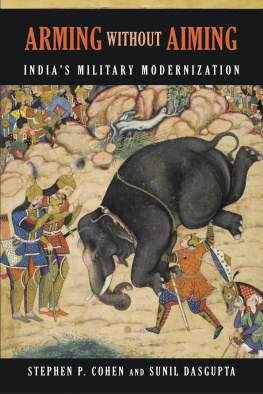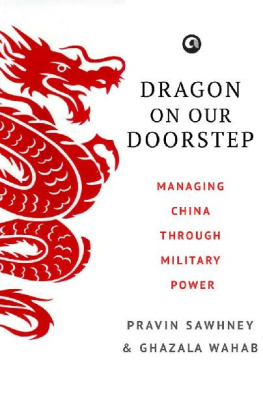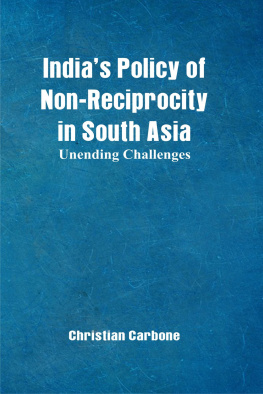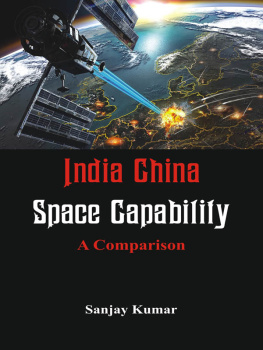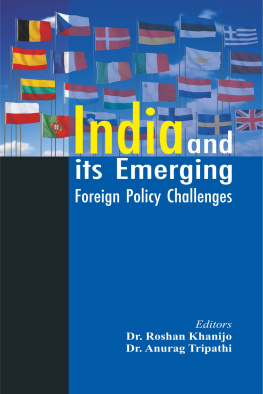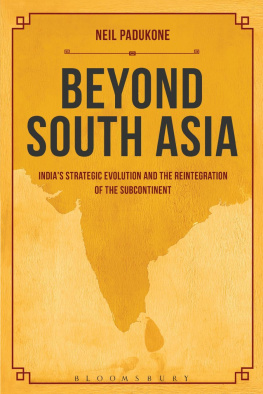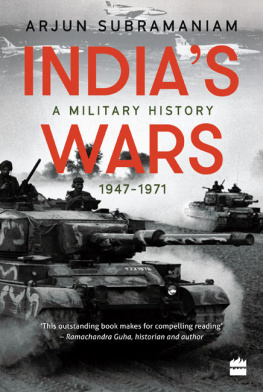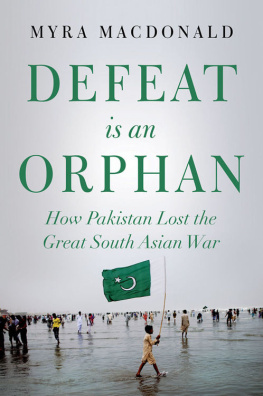India's growing affluence has led experts to predict a major rearmament effort. The second-most populous nation in the world is beginning to wield the economic power expected of such a behemoth. Its border with Pakistan is a tinderbox, the subcontinent remains vulnerable to religious extremism, and a military rivalry between India and China could erupt in the future. India has long had the motivation for modernizing its militaryit now has the resources as well. What should we expect to see in the future, and what will be the likely ramifications? In Arming without Aiming , Stephen Cohen and Sunil Dasgupta answer those crucial questions.
India's armed forces want new weapons worth more than $100 billion. But most of these weapons must come from foreign suppliers due to the failures of India's indigenous research and development. Weapons suppliers from other nations are queuing up in New Delhi. A long relationship between India and Russian manufacturers goes back to the cold war. More recently, India and Israel have developed strong military trade ties. Now, a new military relationship with the United States has generated the greatest hope for military transformation in India.
Against this backdrop of new affluence and newfound access to foreign military technology, Cohen and Dasgupta investigate India's military modernization to find haphazard military change that lacks political direction, suffers from balkanization of military organization and doctrine, remains limited by narrow prospective planning, and is driven by the pursuit of technology free from military-strategic objectives. The character of military change in India, especially the dysfunction in the political-military establishment with regard to procurement, is ultimately the result of a historical
ARMING
without
AIMING
INDIA'S MILITARY MODERNIZATION
STEPHEN P. COHEN
and
SUNIL DASGUPTA
BROOKINGS INSTITUTION PRESS
Washington, D.C.
Copyright 2010
THE BROOKINGS INSTITUTION
1775 Massachusetts Avenue, N.W., Washington, DC 20036
www.brookings.edu
All rights reserved. No part of this publication may be reproduced or transmitted in any form or by any means without permission in writing from the Brookings Institution Press.
Library of Congress Cataloging-in-Publication data
Cohen, Stephen P., 1936
Arming without aiming : India's military modernization / Stephen P. Cohen and Sunil Dasgupta.
p. cm.
Includes bibliographical references and index.
Summary: India, a leading importer of advanced conventional weaponry, has not planned strategically for its military needs, although the haphazard approach, due to competing elements within the military and a restraint policy in place since the Nehru era, may be the right one in seeking accommodation with others in the regionProvided by publisher.
ISBN 978-0-8157-0402-7 (hardcover : alk. paper)
1. IndiaArmed ForcesWeapons systems. 2. IndiaArmed Forces Operational readiness. 3. IndiaDefenses. 4. IndiaMilitary policy.
I. Dasgupta, Sunil. II. Title.
UA840.C628 2010
355.80954dc22 2010024055
9 8 7 6 5 4 3 2 1
Printed on acid-free paper
Typeset in Minion
Composition by Cynthia Stock
Silver Spring, Maryland
Printed by R. R. Donnelley
Harrisonburg, Virginia
To Pabitra Kumar Dasgupta who has walked long and far from his childhood in the mica mining outpost of Koderma in pre-independence Bihar
C ONTENTS
P REFACE
T here is widespread acknowledgment that India is newly important. Whether emerging, rising, or an Asian giant, there is some expectation that India's new affluence will enable it to deploy vastly improved armed forces. This expanded military capability will enable it, then, to play a larger role in world affairs, notably in Asia, and to more effectively address military challenges both abroad and at home.
While India's historical poverty would seem to explain why it has not developed its military power, several studies have suggested reasons for why this is not the case, and why India has not been able to alter its strategic condition. In a very influential analysis in the 1990s, American strategist George Tanham argued that India had problems developing a robust security policy, including a strong military force, because the country was bereft of coherent strategic thought. Indian leaders, he says, preferred to view security as a political rather than a military matter and consistently made choices that downplayed military aspects such as nuclear weapons in favor of political management of security issues.
Recent writing on India, drawing on the first period of sustained economic growth in the history of independent India, expects dramatic changes in how the country demonstrates its national power.
In contrast, neorealists such as Kenneth Waltz have emphasized threat over resources. States reorder their priorities when threatened, irrespective of their economic condition. Poor societies are quite capable of generating military power sufficient to frustrate and even defeat wealthier nations with bigger and better-equipped armies. In this view, India's 1998 nuclear tests were driven by its security concerns about the rising threats from Pakistan and China and established that India was willing to pay for the ability to secure its interests. On the other hand, richer societies may hold back their military spending to curb arms races; here politicians pursue political security rather than military power alone. Both India's nonalignment and nuclear weapons programs, for example, have deviated from the predictions of the affluence theory. Its nonalignment during the cold war was the legacy of its colonial history and defined by its ability to play off the United States and the Soviet Union. Further, its nuclear program sought to preserve its nuclear options while trying not to antagonize other great powers. When the tests occurred in 1974 and 1998, the circumstances were extraordinary. Certainly, the testing decisions had little to do with India's affluence at the time.
The preeminence of threat in determining the direction and content of military modernization is subject to debate as well. Over the last two decades, the military threat to India has changed dramatically toward unconventional war, but the nation's armed forces and national security decisionmaking structure appear not to have made insurgency and terrorism the centerpiece of the military modernization effort. Advanced conventional weapons such as fighter aircraft, tanks, and aircraft carriers heavily dominate India's wish list even though they have tenuous influence on the problems of insurgency and terrorism. Doctrinal changes have sought to extend conventional deterrence to subconventional conflict. However, the prospects of extending deterrence to insurgency and terrorism and especially the difficulty the Indian Army has had in going from conventional war preparation to counterinsurgency and back demonstrates the difficulties of moving large organizations, especially without strong direction from the political leadership. Juli MacDonald has taken a critical view of the Indian military establishment, especially of the ability of the armed forces to modernize meaningfully.
The American scholar Amit Gupta argues that the structural context of India's modernization efforts is critical. He argues that regional powers such as India suffer from uneven development because they live on a feast or famine cycle of funding and access to foreign technology and weapons. Doctrinal development is erratic as the services scramble to fit their strategies to available weapons; their armed forces do not have the balance of the great powers. Meanwhile, at home regional powers have focused energies on unconventional technologies such as nuclear weapons to minimize the consequences of their weak conventional militaries.

